Technology
These 10 outlawed tech innovations rocked F1
Formula 1 races are won on the track, but the groundwork to creating a winning machine kicks off months before lights go out on a grand prix weekend. In the buildup to every new season, designers and engineers pore over the rules in search of loopholes – ones they can exploit in the name of […]
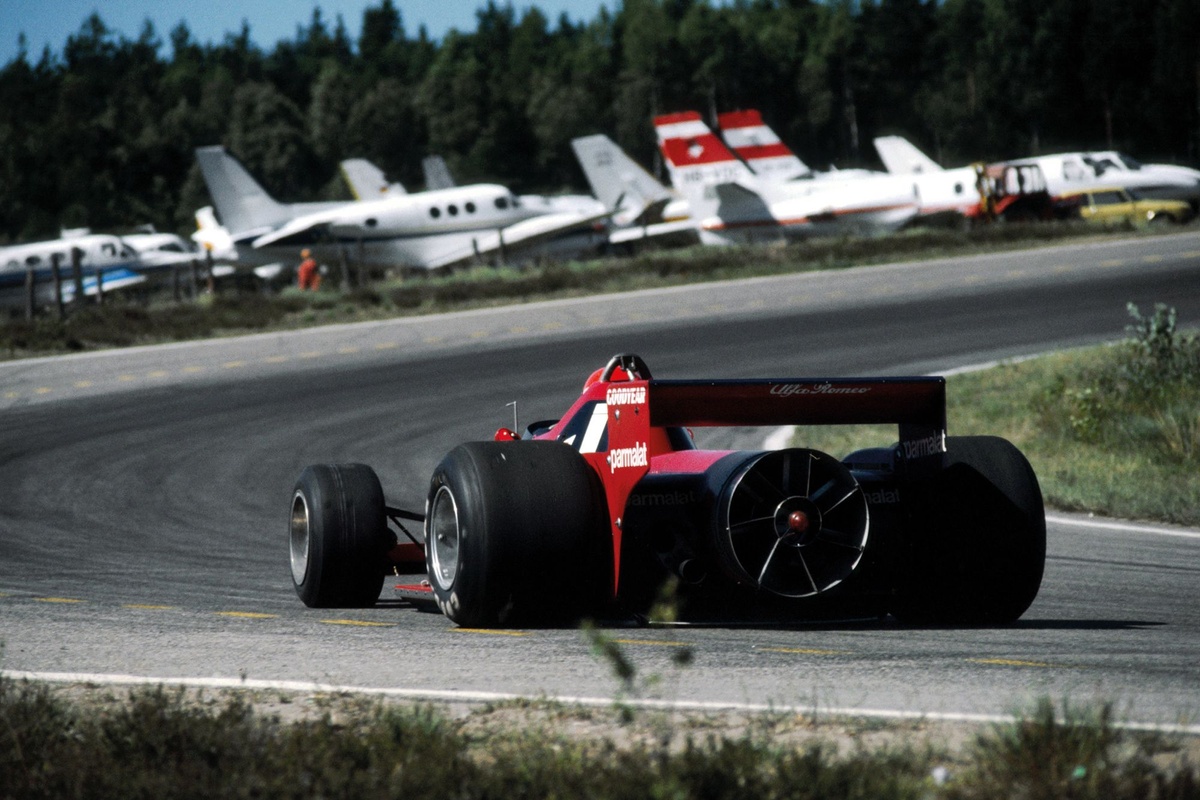
Formula 1 races are won on the track, but the groundwork to creating a winning machine kicks off months before lights go out on a grand prix weekend. In the buildup to every new season, designers and engineers pore over the rules in search of loopholes – ones they can exploit in the name of speed.
The advances sometimes go a step beyond finding a gap in the regulations, and become a break in the rules. When that happens, whether the innovation is winning races or proving to be a safety hazard, it can be outlawed by F1’s governing body, the FIA.
Advertisement
This can mean that entire cars are outlawed from entering F1 races or, on other occasions, teams have to re-engineer their machines to comply.
But just what kind of technical wizardry has Formula 1 outlawed in its 75-year history? Well, these are 10 of the most high-profile innovations that have been banned from F1.
Brabham BT46B – ‘The Fan Car’
From the front, Brabham’s BT46B looks almost like any other 1970s Formula 1 car: it’s got a low profile, wide stance and a rudimentary wing at each end. One aspect of the car that was far from rudimentary, however, was the enormous fan that was engineered into the car to increase downforce.
Advertisement
‘The Fan Car’, as it was affectionately known, made its F1 debut at the 1978 Swedish Grand Prix in Anderstorp. To aid performance, Brabham engineers connected a fan directly to the car’s gearbox using a complex array of clutches. This diverted around 30hp from the engine to the fan, which then sucked air out from beneath the floor of the car.
The idea proved successful, and the extra downforce that was created by the spinning fan helped Niki Lauda to a race win in Sweden. However, Brabham decided to withdraw it from competition for the remainder of the season. The car wasn’t actually banned from F1 following its first race, but a regulation change in 1979 meant that it would have been outlawed from the following year.
Patrick Depailler, Tyrrell P34 Ford

Patrick Depailler, Tyrrell P34 FordRainer W. Schlegelmilch / Motorsport Images
Rainer W. Schlegelmilch / Motorsport Images
Advertisement
The thinking was that having four wheels at the front instead of two would increase the contact patch with the track, aiding traction in the corners and helping with braking performance. Sure, pitstops would take longer with an extra pair of tyres to change, but that could be offset by the on-track gains.
The theory worked, and Patrick Depailler qualified third on the P34’s first outing at the 1976 Spanish Grand Prix at Jarama. He went on to suffer a braking issue that meant he didn’t finish the race, but two weeks later the P34 helped Jody Scheckter to fourth in Belgium. The car even managed a single race win and got its drivers onto the podium on 14 occasions.
The novel design was short-lived, however, as development of the mini tyres essential for the front wheels was cut by Goodyear and the special rubber became scarce by the end of the 1977 season. What’s more, a technical directive in the 1980s meant that Formula 1 cars could only use four wheels – no more, no less.
Active suspension
In the early 1990s, teams had moved on from analogue upgrades to focus on more high-tech improvements, like active suspension, which brought powered components to F1 cars to monitor and change the suspension while drivers traversed a track in order to maximise grip and performance.
Advertisement
Lotus was, once again, an early pioneer in this space and the first victory for a car with active suspension was in 1987 when Ayrton Senna won the Monaco Grand Prix for Lotus. The tech reached its heyday in the 1990s, however, when cars were able to automatically adjust the ride height at all four corners in order to maintain a flat and stable position.
The big advantage of the tech was that it provided a more stable aero platform, which gave engineers a better understanding of how they could maximise the performance from their cars. This, coupled with other innovations of the time, meant that speeds quickly rose and lap times plummeted.
However, the added complexities and costs associated with active suspension led to its demise and it was outlawed in Formula 1 from the 1994 season.
Mass dampers
Fernando Alonso, Renault F1 Team R25

Fernando Alonso, Renault F1 Team R25 Sutton Images
Sutton Images
Advertisement
These days tuned mass dampers are used in super-tall skyscrapers, to help cope with strong winds, and top-tier mountain bikes, where they smooth out bumps on a gnarly downhill track. But, in the mid-2000s, these sprung masses were initially used to great effect in Formula 1.
A tuned mass damper is a weight that’s held in position inside a tube and has a spring at either end. This simple creation moves against an interference to offset it, so in tall buildings it helps stop the sway in a strong breeze and in F1 it helps improve stability.
The humble device was used by Renault in its 2005 R25 Formula 1 car, with the team initially installing a sprung 10kg mass in the car before realising that the amount of weight required could be tuned for each track it visited. The additional weight proved effective, as it was said to give drivers Fernando Alonso and Giancarlo Fisichella more confidence. It was also said to be worth as much as a second a lap in terms of performance on some tracks.
The system faced a protest following the 2006 German GP, and Renault opted to run its cars without the device from then on to avoid disqualification. In a later hearing at the court of appeal, the mass damper was outlawed by the FIA, which deemed that it was a device that aimed to “markedly improve the car’s aerodynamic output.”
Double diffuser
With any overhaul in regulations in Formula 1, there’s always a chance that one team will find a loophole that lets them maximise performance. When new rules came into force in 2009 to try and cut the amount of downforce produced by F1 cars, the double diffuser exercised one such loophole.
Advertisement
The double diffuser was a device deployed by teams including Brawn GP, Toyota and Honda – but the former managed to maximise the effectiveness of the aerodynamic device. It created channels in the rear diffuser to maximise its surface area without exceeding the dimensions stated in the regulations.
Why The Double Diffuser Was (Down)Forced Out Of F1

Why The Double Diffuser Was (Down)Forced Out Of F1Andrew Ferraro / Motorsport Images
Andrew Ferraro / Motorsport Images
Do you know what’s better than one DRS? Two. At least, that’s what Mercedes thought with the novel front wing design it deployed in 2011 and then refined in 2012.
For 2011, a creation dubbed the W-duct sought to have a similar impact on the front wing as the F-duct had on the rear. Namely, it redirected the airflow to stall the front wing and cut downforce to aid top speed.
Advertisement
This system was refined in 2012 and comprised pipework that ran through the car from the front wing to the rear to stall both wings and cut drag produced by the car. Teams subsequently sought to outlaw the creation, as implementing it themselves meant finding space in their cars to weave pipework from front to rear.
What’s more, the device turned out to be a hinderance to the Mercedes team in its own front wing development. That’s because the innovation came about when teams up and down the grid were pushing the flexibility of their wings to the extreme, and Mercedes wasn’t able to capitalise on this due to the construction of its own wings.
Despite some teams also working to implement double DRS systems of their own, the innovation was outlawed for the 2013 season.
DAS system
After winning six constructors’ crowns on the bounce, Mercedes was in a league of its own come 2020 and was all about refining its dominant machinery. So, for 2020, the German manufacturer rolled out a unique steering system that sought to further increase the gap to the competition.
Advertisement
Watch: Mercedes’ moving steering wheel: What is DAS and how does it work?
The innovation was spotted in pre-season testing when drivers Lewis Hamilton and Valtteri Bottes were seen pulling on their steering wheels, as well as twisting it left and right to turn the wheels. Pulling the wheel, it turned out, altered the alignment of the front wheels, which would change the contact patch between the tyre and the road.
Uses for the system ranged from aiding tyre warmup following a safety car period to enhancing mechanical grip to improve cornering performance. Mercedes was permitted to run the system for the 2020 season, but the FIA moved to outlaw the setup from 2021, which put other teams off deploying systems of their own.
Flexi wings – 2024
The latest controversy to rock Formula 1 has been flexible wings. Wings at the front and rear of Formula 1 machinery have been seen flexing under load, which means their profile reduces at speed and a reduction in drag.
Advertisement
Flexible wings have been an issue in F1 for years but the FIA is attempting to clamp down on them more than ever right now. A technical directive rolled out in 2024 sought to reduce the permitted flex in wings and implemented tougher tests on wing flexibility.
A further technical directive due to hit the grid at the Spanish Grand Prix will further clamp down on flexible wings in F1. From the Spanish race, teams will only be permitted to have front wings that can flex by 10mm when under load. Additionally, the flex on the slot gaps on rear wings must be no greater than 0.5mm once the technical directive comes into force.
To read more Motorsport.com articles visit our website.
Technology
Small businesses are an innovation powerhouse. For…
The federal government wants to boost Australia’s productivity levels – as a matter of national priority. It’s impossible to have that conversation without also talking about innovation. We can be proud of (and perhaps a little surprised by) some of the Australian innovations that have changed the world – such as the refrigerator, the electric […]

The federal government wants to boost Australia’s productivity levels – as a matter of national priority. It’s impossible to have that conversation without also talking about innovation.
We can be proud of (and perhaps a little surprised by) some of the Australian innovations that have changed the world – such as the refrigerator, the electric drill, and more recently, the CPAP machine and the technology underpinning Google Maps.
Australia is continuing to drive advancements in machine learning, cybersecurity and green technologies. Innovation isn’t confined to the headquarters of big tech companies and university laboratories.
Small and medium enterprises – those with fewer than 200 employees – are a powerhouse of economic growth in Australia. Collectively, they contribute 56% of Australia’s gross domestic product (GDP) and employ 67% of the workforce.
Our own Reserve Bank has recognised they also have a huge role to play in driving innovation. However, they still face many barriers to accessing funding and investment, which can hamper their ability to do so.
Finding the funds to grow
We all know the saying “it takes money to make money”. Those starting or scaling a business have to invest in the present to generate cash in the future. This could involve buying equipment, renting space, or even investing in needed skills and knowledge.
A small, brand new startup might initially rely on debt (such as personal loans or credit cards) and investments from family and friends (sometimes called “love money”).
Having exhausted these sources, it may still need more funds to grow. Bank loans for businesses are common, quick and easy. But these require regular interest payments, which could slow growth.
Selling stakes
Alternatively, a business may want to look for investors to take out ownership stakes.
This investment can take the form of “private equity”, where ownership stakes are sold through private arrangement to investors. These can range from individual “angel investors” through to huge venture capital and private equity firms managing billions in investments.
It can also take the form of “public equity”, where shares are offered and are then able to be bought and sold by anyone on a public stock exchange such as the Australian Securities Exchange (ASX).
Unfortunately, small and medium-sized companies face hurdles to accessing both kinds.

Kvalifik/Unsplash
Private investors’ high bar to clear
Research examining the gap in small-scale private equity has found 46% of small and medium-sized firms in Australia would welcome an equity investment – despite saying they were able to acquire debt elsewhere.
They preferred private equity because they also wanted to learn from experienced investors who could help them grow their companies. However, very few small and medium-sized enterprises were able to meet private equity’s investment criteria.
When interviewed, many chief executives and chairs of small private equity firms said their lack of interest in small and medium-sized enterprises came down to cost and difficulty of verifying information about the health and prospects of a business.
To make it easier for investors to compare investments, all public companies are required to disclose their financial information using International Financial Reporting Standards.
In contrast, small private companies can use a simplified set of rules and do not have to share their statements of profit and loss with the general public.
Share markets are costly and complex
Is it possible to list on a stock exchange instead? An initial public offering (IPO) would enable the company to raise funds by selling shares to the public.
Unfortunately, the process of issuing shares on a stock exchange is time-consuming and costly. It requires a team of advisors (accountants, lawyers, and bankers) and filing fees are high.
There are also ongoing costs and obligations associated with being a publicly traded company, including detailed financial reporting.
Last week, the regulator, the Australian Securities and Investments Commission (ASIC), announced new measures to encourage more listings by streamlining the IPO process.
Despite this, many small companies do not meet the listing requirements for the ASX.
These include meeting a profits and assets test and having at least 300 investors (not including family) each with A$2,000.
There is one less well-known alternative – the smaller National Stock Exchange of Australia (NSX), which focuses on early-stage companies. Ideally, this should have been a great alternative for small companies, but it has had limited success. The NSX is now set to be acquired by a Canadian market operator.
Making companies more attractive
Our previous research has highlighted that small and medium-sized businesses should try to make themselves more attractive to private equity companies. This could include improving their financial reporting and using a reputable major auditor.
At their end, private equity companies should cast a wider net and invest a little more time in screening and selecting high-quality smaller companies. That could pay off – if it means they avoid missing out on “the next Google Maps”.
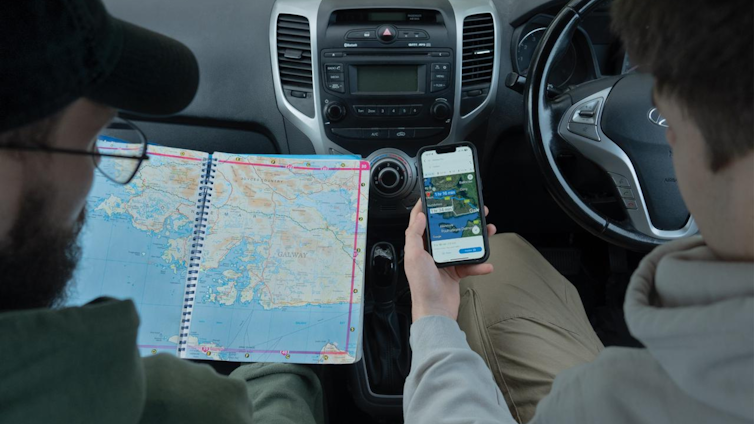
Susan Quin & The Bigger Picture, CC BY
What about the $4 trillion of superannuation?
There are other opportunities we could explore. Australia’s pool of superannuation funds, for example, have begun growing so large they are running out of places to invest.
That’s led to some radical proposals. Ben Thompson, chief executive of Employment Hero, last year proposed big superannuation funds be forced to invest 1% of their cash into start-ups.
Less extreme, regulators could reassess disclosure guidelines for financial providers which may lead funds to prefer more established investments with proven track records.
There is an ongoing debate about whether the Australian Prudential Regulation Authority (APRA), which regulates banks and superannuation, is too cautious. Some believe APRA’s focus on risk management hurts innovation and may result in super funds avoiding startups (which generally have a higher likelihood of failure).
In response, APRA has pointed out the global financial crisis reminded us to be cautious, to ensure financial stability and protect consumers.
This article is part of The Conversation’s series, The Productivity Puzzle.
The author would like to acknowledge her former doctoral student, the late Dr Bruce Dwyer, who made significant contributions to research discussed in this article. Bruce passed away in a tragic accident earlier this year.
![]()
Colette Southam does not work for, consult, own shares in or receive funding from any company or organisation that would benefit from this article, and has disclosed no relevant affiliations beyond their academic appointment.
This article was originally published on The Conversation. Read the original article.
Technology
IDC Report: Huawei Ranks No.1 in Global Wrist-Worn Market in Q1
H u awei wearable devices Surpassed 200 Million Cumulative Shipments SHENZHEN, China, June 14, 2025 /PRNewswire/ — According to the latest IDC Worldwide Quarterly Wearable Device Tracker data, Huawei ascended to the top position in the global wrist-worn device market in Q1 2025, while maintaining robust growth momentum and retaining its leadership in shipment volume within China. […]
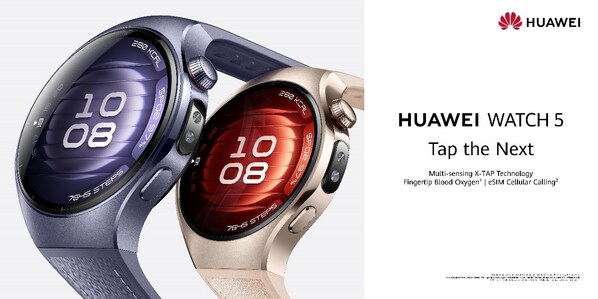
H u awei wearable devices Surpassed 200 Million Cumulative Shipments
SHENZHEN, China, June 14, 2025 /PRNewswire/ — According to the latest IDC Worldwide Quarterly Wearable Device Tracker data, Huawei ascended to the top position in the global wrist-worn device market in Q1 2025, while maintaining robust growth momentum and retaining its leadership in shipment volume within China. Additionally, as of 5 June 2025, Huawei’s cumulative global wearable shipments have exceeded 200 million units.
Five Product Series Catering to Global Users’ Diverse Scenario Needs
Huawei wearables integrate fashionable design, professional and comprehensive sports and health features, and efficient, practical smart experiences. Tailored to different user needs, Huawei has developed five product series to fulfil the diverse scenario requirements of all user groups—spanning smart living, scientific exercise, and health management.
The HUAWEI WATCH Series incorporates cutting-edge smart technology, featuring standalone calling capabilities and smart vehicle control functions to enable an efficient, intelligent lifestyle. The newly launched HUAWEI WATCH 5 delivers enhanced intelligence, efficiency and convenience. Equipped with the innovative multi-sensing X-TAP technology, it unlocks new dimensions in health monitoring and tactile interaction. The HUAWEI WATCH FIT Series fulfils lightweight wear needs through its slim design and extensive sports functions, allowing users to fully enjoy daily life. Meanwhile, the HUAWEI WATCH GT Series combines exceptional battery life with fashionable aesthetics and professional sports health features, serving as a comprehensive wrist-worn fitness coach.


For users who push boundaries and challenge extremes, the HUAWEI WATCH Ultimate Series delivers ultimate reliability with its rugged construction, advanced sports modes including 100-metre professional diving and outdoor expedition features, as well as advanced golf course mode, to bring cater to users’ needs.
Additionally, addressing hypertension management challenges, Huawei innovatively broke through wrist-based blood pressure technology to launch the HUAWEI WATCH D Series. Through its breakthrough 24-hour dynamic blood pressure monitoring function, it helps users measure and manage blood pressure anytime, anywhere, integrating professional-grade blood pressure health guardianship into daily life.
Technological Innovation Driving Breakthroughs in Sports Health Technology
Behind the satisfaction of users’ sports health management needs lies Huawei wearables’ continuous innovation investment. Huawei has established three Health Labs globally, leveraging capabilities from over ten Huawei research institutes to relentlessly explore the frontiers of sports health technology.
In 2024, Huawei launched its new digital health & fitness paradigm—TruSense System—achieving higher accuracy and speed in vital sign data monitoring. In 2025, the TruSense System was upgraded again, fusing the advantages of fingertip and wrist detection to deliver a fuller, more accurate, and faster health monitoring experience, including 10-second fingertip blood oxygen readings and an increase in micro-body measurement indicators to 17 items.
In the field of blood pressure management, Huawei pioneered the launch of the HUAWEI WATCH D, a wrist-based blood pressure monitor that obtained Class II medical device registration certification in China. Now this innovation included in the “Chinese Guidelines for the Prevention and Treatment of Hypertension (2024 revision)”.
As of now, Huawei wearable devices have obtained 7 domestic medical certifications and medical device certificates in 13 overseas countries/regions, with nearly 1000 patent applications in the smart wearables field.
Huawei has collaborated with over 160 global professional institutions, conducted 300+ health research projects, and attracted over 17 million users to participate in health studies.
Active Rings: Where Huawei and Users Unite to build Sports Health Lifestyles
Huawei accompanies global users to build sports health lifestyles together. In September 2023, Huawei initiated the “Light Up Your Rings” campaign, which has seen over 6 million global users participate, lighting up rings over 300 million times. In 2025, the fully upgraded “Active Rings” initiative was introduced, inspiring global users to move joyfully anytime, anywhere with Huawei wearables.
The Active Rings campaign has already been held in Germany, Spain, and China, and beyond, where consumers jointly enjoyed active moments. It will progressively launch in APAC, Latin America, the Middle East, and other regions in the future.
Photo – https://mma.prnasia.com/media2/2708541/HUAWEI_WATCH_5.jpg?p=medium600
Photo – https://mma.prnasia.com/media2/2708543/1.jpg?p=medium600
Technology
How to Watch F1 Live UK: Canada Start Time, TV Channel & Schedule
The 2025 F1 season is well underway, and the Formula One circus heads to Canada for round 10. McLaren’s Oscar Piastri sits at the top of the standings, but he’s only ten points clear of teammate Lando Norris. After a late penalty in Spain, Max Verstappen is almost 50 points off the pace, but you […]
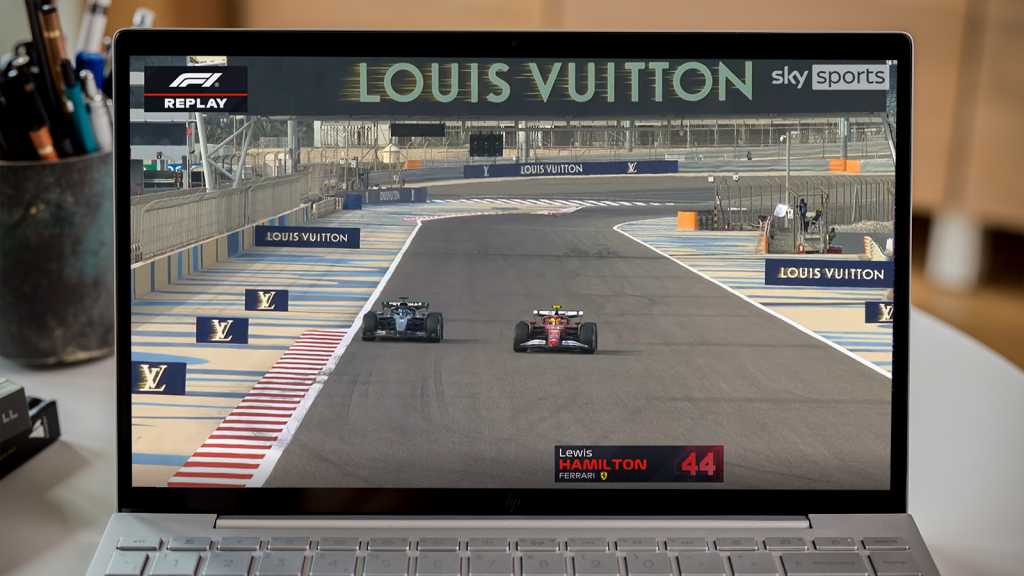
The 2025 F1 season is well underway, and the Formula One circus heads to Canada for round 10.
McLaren’s Oscar Piastri sits at the top of the standings, but he’s only ten points clear of teammate Lando Norris.
After a late penalty in Spain, Max Verstappen is almost 50 points off the pace, but you can’t rule out the reigning world champion at this stage. It looks like a three-way fight for the Drivers’ title, with Verstappen’s teammate Yuki Tsunoda and both Mercedes and Ferrari drivers off the pace.
What will happen at this weekend’s 10th race of the season? Here’s everything you need to know about the Canadian Grand Prix, including how to watch live from wherever you are, start time, TV channel, schedule and more.
PROMOTION
Use this special VPN birthday deal
Enjoy our Birthday deal: Get the 2-year Surfshark VPN plan for just $1.99/month with 3 months extra. Find the best deals online with a VPN that keeps your shopping spree safe and private! Block trackers, encrypt your data, and enjoy ad-free shopping.
What time is the F1 Canadian Grand Prix?
The F1 season continues at the Circuit Gilles Villeneuve in Montreal, Canada, this weekend. Here’s when the race will start:
- Sunday 15 June, 7pm BST (UK time), 2pm EDT, 11am PDT
How to watch the F1 Canadian Grand Prix live in the UK
Sky Sports has the full rights to F1 in the UK. It will show every practice, qualifying, sprint and race session of all 24 Grands Prix in the 2025 season.
To access Sky Sports, you have a few options. The first is by adding it to a regular Sky TV package, which offers offline access via a Sky Q box. This costs a total of £51 per month with £20 upfront on a 24-month contract.
If you don’t mind streaming, you might prefer to pair it with a Sky Stream dongle. You can get Sky TV, Netflix and Sky Sports for £35 per month on a 24-month contract.
Need a new TV? Sky Glass has Sky built-in, though it still relies on the internet for TV. However, it costs at least £14 per month with £20 upfront for 48 months, plus Sky Sports and Sky TV for an additional £35 per month.
If you don’t want to buy any new Sky hardware, it’s easier to stream via Now. This currently costs £26 per month, provided you’re happy to commit for 6 months. After that, it’s £34.99 per month.

Dominik Tomaszewski / Foundry
However, it’s worth noting that the standard plan limits you to 720p resolution and streaming on only one device at a time. To get 1080p and two devices, it’s an extra £6 per month for Now Boost, while three devices and 4K require £9 per month for Ultra Boost.
How to watch F1 for free in the UK
In the UK, the only way to watch F1 for free is on Channel 4, though this requires a TV licence if you plan on watching live.
Even then, that only applies to the British Grand Prix in 2025, with just highlights of the other races shown.

Sky
How to use a VPN to watch the F1 Spanish Grand Prix
If you’re not in the same country as the TV broadcaster, you won’t be able to watch F1 online without a VPN.
Officially, Sky doesn’t allow you to watch using a UK subscription while outside the country.
However, there is another way – using a virtual private network, or VPN. A VPN makes it appear that you’re located in the same country as the broadcaster when you connect to a server in the appropriate country.
If you’re already paying, it’s worth trying to access the local site or app. We’re using NordVPN for this tutorial, but Surfshark is a popular alternative. See the full range of options in our guide to the best VPN services.
Download the relevant VPN app

Anyron Copeman / Foundry
Head to the download page for the VPN you’d like to install and click ‘Download App’. The likes of NordVPN are available on a range of devices.
Connect to a UK server

Sam Singleton
Open the app and sign in to your account if necessary. Then, select any US or UK server and connect to it.
Depending on the service you’re using, it might look quite different to the above. But this should be relatively easy to find.
Start watching as usual

Anyron Copeman / Foundry
Head to the website or app you’d usually use to start watching, then sign in if you haven’t already.
You should now be able to stream content as normal and without any restrictions.
If it’s not working and you’re watching from a phone using Wi-Fi, try turning on Airplane Mode and then enabling only Wi-Fi.
Technology
UIL OKs tech, safety upgrades for 2025
Uvalde High School senior Jett Flores shows off one of the guardian cap covers the University Interscholastic League has approved for use in games in 2025. Guardian caps give extra head protect. (Photo by Wade Miller|Uvalde High School) Two big things are coming to Texas high school football in 2025. The University Interscholastic League has […]
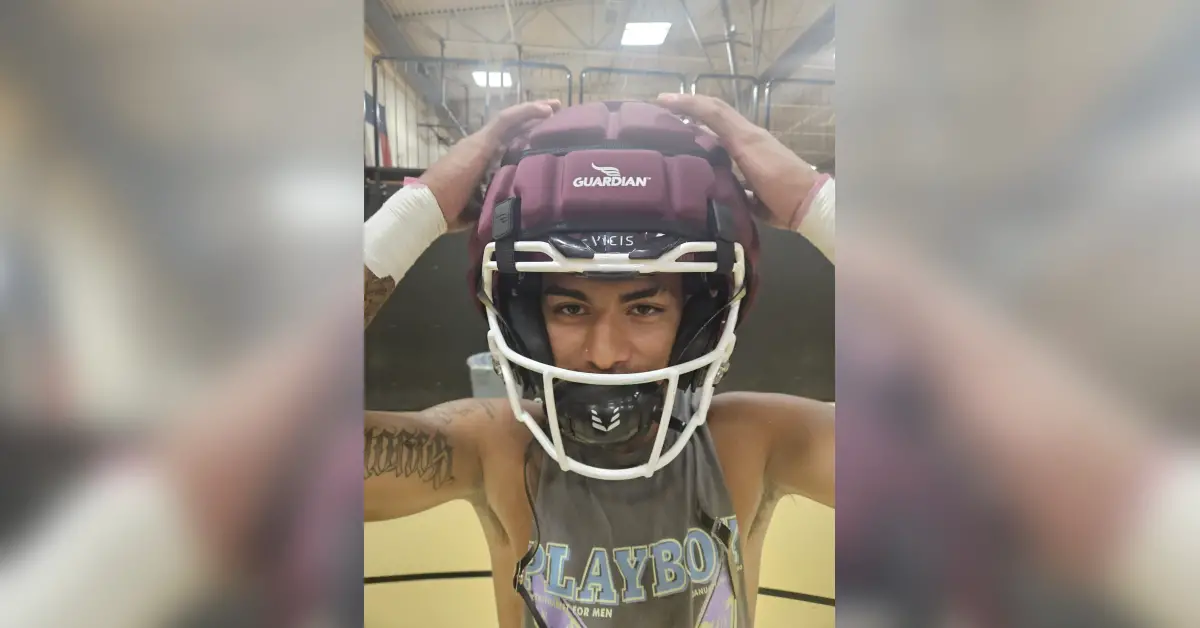

Uvalde High School senior Jett Flores shows off one of the guardian cap covers the University Interscholastic League has approved for use in games in 2025. Guardian caps give extra head protect. (Photo by Wade Miller|Uvalde High School)
Two big things are coming to Texas high school football in 2025.
The University Interscholastic League has approved the use of wearable technology for the purpose of play-calling.
According to the UIL, coach-to-player communication will be allowed through one-way wearable technologies for games beginning in 2025.
Unlike the National Collegiate Athletic Association-approved helmet communication technology, the UIL will allow wristband-like technology to communicate play calls from coaches to athletes.
Teams will be allowed to use watches, wristbands, and belt packs to communicate in-game calls only.
There will be no limit on the number of athletes who can wear a device during the game.
The UIL continues to ban technology such as tablets and electronic devices on the sidelines.
Play calling goes from the coaches booth or the pressbox, where technology is permitted.
“I would like to see the UIL allow us to do like they allow colleges to do. To have a direct connection to the helmet, like they have in the professional football,” said Uvalde High School head coach Wade Miller.
“The way things are now, I would have to send a play to a coach in the pressbox and then have them relay the information to our quarterback wearing a wrist device,” said Miller. “I think it is quicker to either signal in a play by hand signals, to have someone take in a play, or just to have the quarterback come to the sideline to get the play.”
Since 2024, the NCAA has allowed in-helmet communication technology.
“I think the UIL will eventually go to what college football uses now. It may be a few years,” said Miller.
The other major rule change for UIL football for 2025 will be to allow the use of guardian caps on helmets as long as the caps are the primary shell color of the helmet.
A guardian cap is a padded, soft-shell helmet cover designed to reduce impact during collisions in football.
“Using guardian caps is a good way to further reduce concussions,” said Coach Miller. “It’s a good new addition.”
The UIL has some other rules changes set for the coming season, but the guardian cap and the wristband technology devices are the two biggest changes.
Texas is the lone state in the union that uses the NCAA rule book. But there are exceptions to NCAA rules noted in the UIL rules.
All other states in the United States use high school football rules set forth by the National Federation of High Schools.
JVOLZ@ULNNOW.COM, 830-278-3335
Technology
Will it hurt China amid amid growing tensions with US? – Firstpost
Taiwan’s decision deals another setback to Beijing’s efforts to expand its domestic chipmaking capabilities and compete with US firms such as Nvidia, as Huawei and SMIC have already been sanctioned by US read more Taiwan has placed Chinese tech giants Huawei Technologies and Semiconductor Manufacturing International Corp. (SMIC) on a trade blacklist, stepping up restrictions […]
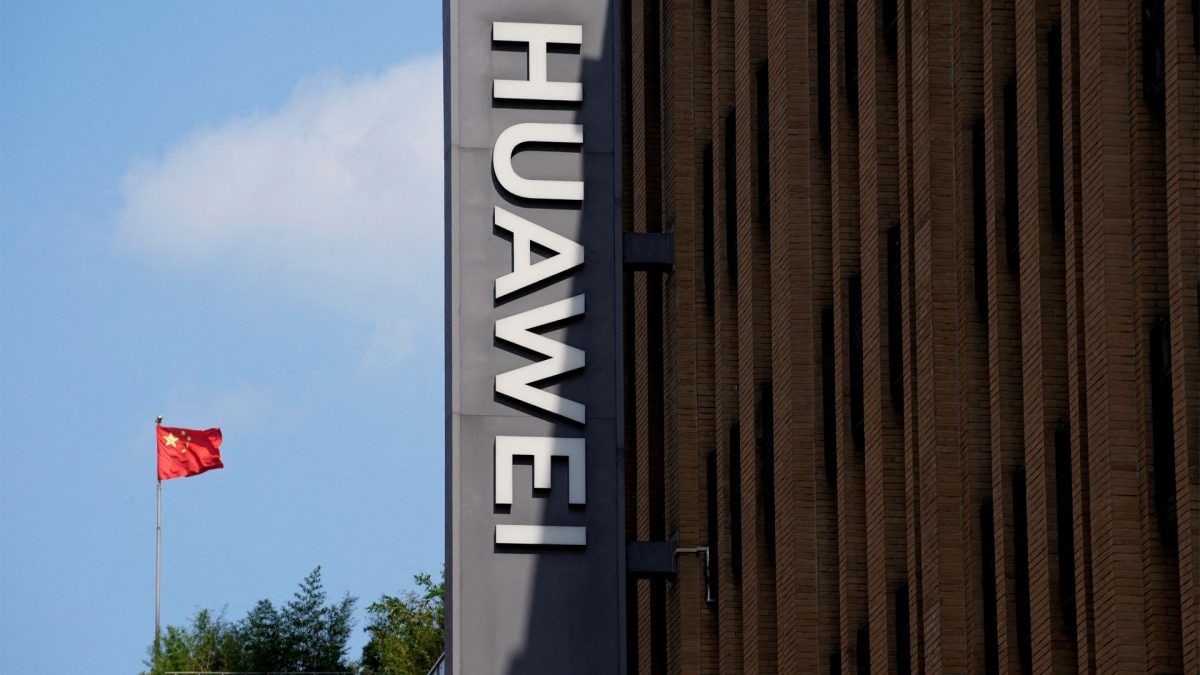
Taiwan’s decision deals another setback to Beijing’s efforts to expand its domestic chipmaking capabilities and compete with US firms such as Nvidia, as Huawei and SMIC have already been sanctioned by US
read more
Taiwan has placed Chinese tech giants Huawei Technologies and Semiconductor Manufacturing International Corp. (SMIC) on a trade blacklist, stepping up restrictions on the firms amid intensifying technological competition between China and the United States.
The island’s Ministry of Economic Affairs updated its Strategic High-Tech Commodities Entity List over the weekend to include Huawei, SMIC and several of their subsidiaries. The move effectively bars the companies from acquiring critical semiconductor technologies from Taiwanese suppliers.
The decision deals another setback to Beijing’s efforts to expand its domestic chipmaking capabilities and compete with US firms such as Nvidia. Huawei and SMIC have already been sanctioned by the United States.
Ray Wang, a Washington-based semiconductor and tech analyst, said the restrictions would close existing loopholes and limit collaboration between blacklisted Chinese firms and Taiwan’s tech industry. “The new rule from Taipei is more of an effort to further tighten the screws on control measures led by Washington,”
South China Morning Post quoted Wang as saying.
Beijing claims Taiwan as its territory and has not ruled out the use of force to achieve unification. The US remains opposed to any forced reunification and continues to provide military support to the island.
Huawei and SMIC have emerged as central players in China’s drive for self-reliance in chipmaking. The companies introduced a 7-nanometer chip in 2023 that powered Huawei’s high-end Mate 60 smartphone, prompting US officials to review the effectiveness of existing sanctions.
The United States has imposed export bans on various Chinese technology firms and scrutinised the role of Taiwan-based companies in aiding China’s semiconductor development. In 2023, the US Commerce Department ordered Taiwan Semiconductor Manufacturing Co. (TSMC) to restrict advanced processing services for mainland clients, Reuters reported.
TSMC, the world’s largest contract chipmaker, has since tightened shipments to China. That followed a TechInsights investigation revealing a TSMC-manufactured AI chip in a Huawei training card. The company may face a US$1 billion fine in connection with a US probe into that chip, according to Reuters.
Despite the new measures, Wang said the impact on Huawei and SMIC would likely be limited. “These companies were already facing significant constraints under previous curbs and had struggled with scaling up production,” he said.
Technology
Why Every Disney Adult Is Buying a Whoop 5.0 Fitness Tracker from Amazon Right Now
When you’re spending long days walking miles through Disney World, wearable tech can go from a nice-to-have to an absolute game-changer. Cinderella Castle From tracking hydration to monitoring how many steps you’ve taken between the castle and your Lightning Lanes, these devices can help guests stay on top of their health while still soaking in […]

When you’re spending long days walking miles through Disney World, wearable tech can go from a nice-to-have to an absolute game-changer.

DISCLOSURE: This post may contain affiliate links, which means when you click a link and make a purchase, we receive a commission.
The Whoop 5.0 isn’t your typical smartwatch or step counter. It’s a sleek, screenless fitness tracker designed to be worn 24/7, gathering detailed insights about your body’s performance, recovery, and sleep. Instead of focusing on flashy notifications or apps, the Whoop is all about collecting biometric data and delivering it through the companion app, so you can truly understand what’s going on with your health and wellness. It’s worn like a fabric wristband, making it comfortable enough to forget it’s even there, which is kind of the point.

What makes the Whoop 5.0 stand out from other trackers is the sheer depth of information it collects. It monitors your heart rate, skin temperature, blood oxygen levels, and HRV (heart rate variability) to deliver a personalized daily “strain” score. It’s basically telling you how hard your body’s working. The sleep tracking is top-tier, too, offering detailed feedback on your sleep stages, sleep debt, and recovery level so you know whether you’re good to go for the day or need to take it easy. There’s also haptic feedback, a Smart Alarm, and Bluetooth compatibility, so it pairs seamlessly with other devices.
Now, imagine having this kind of intel on your body while walking 20,000 steps across Disney World. Disney World trips are no joke on your stamina — you’re constantly on your feet, sometimes in extreme heat, juggling ride times, show schedules, and mobile orders like a pro. The Whoop can help you keep tabs on how your body’s really handling all of it. Are you recovering well overnight? Are you pushing too hard in the heat? Are you getting enough rest between those rope drops and fireworks shows? The data helps you make smarter decisions so you don’t hit a wall mid-vacation.
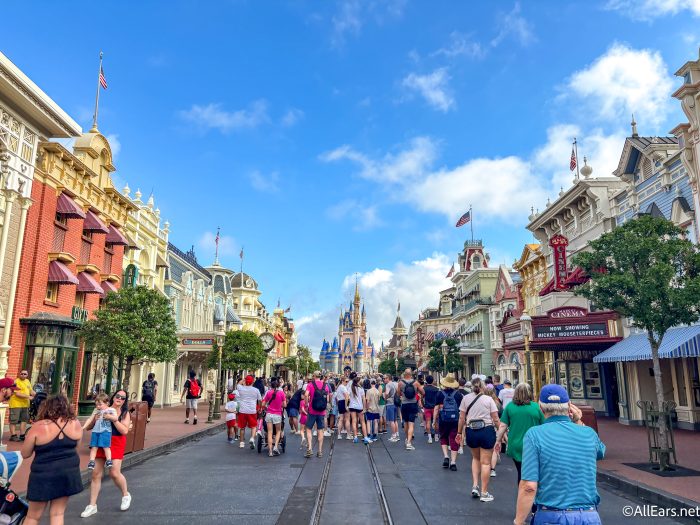

These SuperKnit bands are designed to keep up with your busy schedule—from your high-intensity workouts to your evening plans. With a WHOOP Life membership, choose a SuperKnit band to take on-demand ECG readings.
In the meantime, we’ll be keeping an eye out for the latest Disney deals, so make sure you stay tuned to AllEars for more!
Shop for More Disney Souvenirs and Essentials on Our Amazon Storefront
-

 College Sports2 weeks ago
College Sports2 weeks agoIU basketball recruiting
-

 Health1 week ago
Health1 week agoOregon track star wages legal battle against trans athlete policy after medal ceremony protest
-

 Professional Sports2 weeks ago
Professional Sports2 weeks ago'I asked Anderson privately'… UFC legend retells secret sparring session between Jon Jones …
-

 Professional Sports2 weeks ago
Professional Sports2 weeks agoUFC 316 star storms out of Media Day when asked about bitter feud with Rampage Jackson
-

 Rec Sports3 weeks ago
Rec Sports3 weeks agoScott Barker named to lead CCS basketball • SSentinel.com
-

 Rec Sports3 weeks ago
Rec Sports3 weeks agoJ.W. Craft: Investing in Community Through Sports
-

 Motorsports3 weeks ago
Motorsports3 weeks agoNASCAR Penalty Report: Charlotte Motor Speedway (May 2025)
-

 College Sports3 weeks ago
College Sports3 weeks agoOlympic gymnastics champion Mary Lou Retton facing DUI charge
-

 Motorsports3 weeks ago
Motorsports3 weeks agoRockingham Speedway listed for sale after NASCAR return
-

 Rec Sports2 weeks ago
Rec Sports2 weeks ago2x NBA All-Star Reacts to Viral LeBron James Statement































